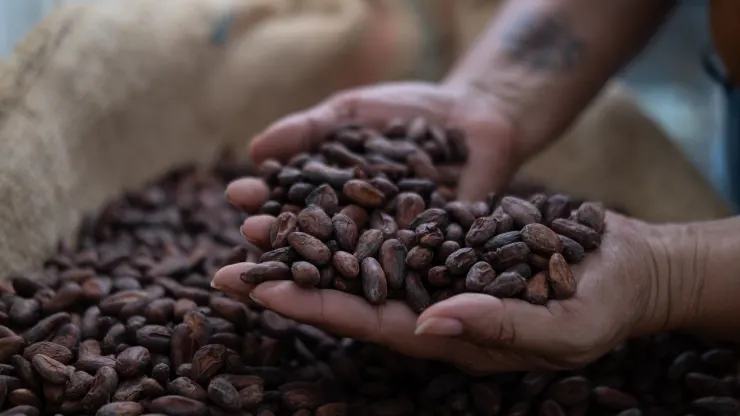The confectionery industry is currently facing a significant challenge as cocoa prices reach new heights. This surge is not just a minor blip but a substantial increase that has the potential to reshape cost structures, profit margins, and even product pricing across the globe. As manufacturers and brands grapple with these escalating costs, the ripple effects are felt from small artisan chocolatiers to large multinational corporations.
Sweet Struggle: Cocoa Costs Skyrocket
In recent months, cocoa prices have seen an unprecedented rise, primarily due to poor weather conditions in major cocoa-producing countries like Ivory Coast and Ghana, which together account for approximately 60% of the world’s cocoa supply. Analysts point to erratic rainfall patterns and higher temperatures, which have adversely affected crop yields. Additionally, socio-political issues in these regions have led to instability, further straining the supply chain. As demand for chocolate remains steadfast globally, the pressures on supply have only intensified, leading to a sharp increase in prices.
The impact of these rising costs is profound, particularly for products heavily reliant on cocoa. Companies are now faced with the dilemma of either absorbing these higher costs or passing them on to consumers, which could potentially dampen sales. The situation is exacerbated by the global economic recovery post-pandemic, where consumer spending is already under scrutiny. Significant players in the industry are scrambling to secure contracts that lock in cocoa prices, but smaller entities find themselves at a disadvantage, lacking the bargaining power to mitigate these financial strains.
The surge is also stirring innovation within the industry as companies seek alternatives to reduce reliance on traditional cocoa sources. Some are experimenting with different recipes that use less cocoa, while others are exploring synthetic or lab-grown alternatives that could potentially ease the dependency on cocoa farms. These innovations, however, require time to develop and may not immediately address the pressing concerns of price hikes.
Chocolatiers Feel the Heat Amid Price Hike
Chocolatiers, particularly those in the premium sector, are feeling the pinch more acutely. For these artisans, the quality of raw materials is paramount, and any compromise could tarnish their brand’s reputation. The current market conditions force them to make tough choices: increase product prices or reduce the size or quality of their offerings. Both options carry the risk of alienating their customer base, which is often loyal but sensitive to changes in pricing and product composition.
The surge in cocoa prices is not only an economic issue but also a cultural one. Chocolate plays a central role in many traditions and celebrations around the world. As prices climb, the accessibility of quality chocolate products could become a luxury that fewer can afford. This shift might lead to a decrease in chocolate consumption or a switch to lower-quality alternatives, affecting the cultural significance of chocolate in various societies.
Außerdem, the increasing costs are prompting some chocolatiers to look for direct trade options, bypassing traditional supply chains for a more controlled and possibly cost-effective sourcing strategy. This approach also appeals to consumers who are increasingly concerned about the ethical implications of their purchases, particularly in terms of fair compensation for cocoa farmers. By dealing directly with producers, chocolatiers not only aim to manage costs better but also enhance their brand appeal by boosting their sustainability credentials.
The current cocoa price surge exemplifies the vulnerabilities within the global confectionery supply chain and highlights the need for greater resilience and adaptability among chocolatiers and chocolate manufacturers. While the industry’s immediate future may involve some bitter adjustments, it is also an opportunity for innovation and for rethinking the way chocolate is produced and consumed globally. As the market continues to evolve, only those who can manage the balance between cost, quality, and ethical sourcing will thrive in the increasingly competitive landscape of chocolate confectionery.









